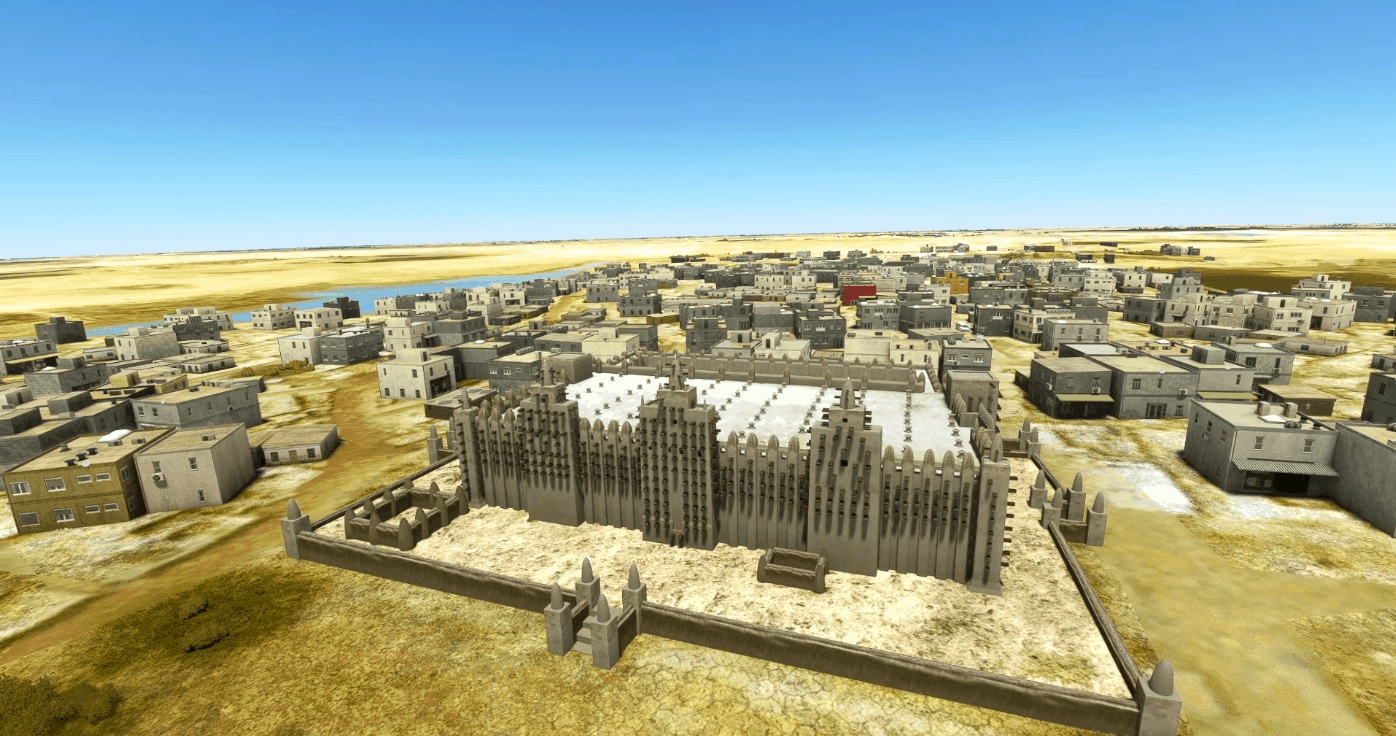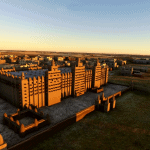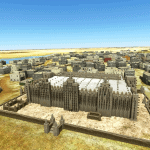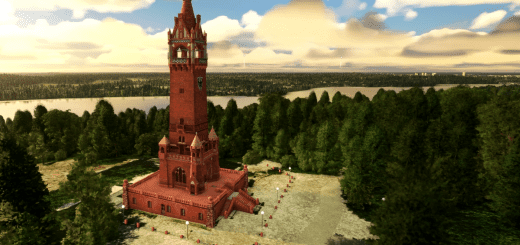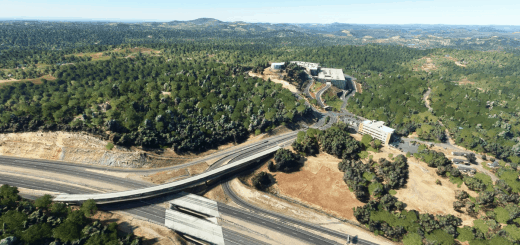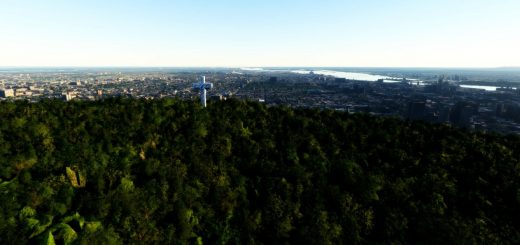Great Mosque of Djenné v0.1
The Great Mosque of Djenné (French: Grande mosquée de Djenné, Arabic: الجامع الكبير في جينيه) is a large banco or adobe building that is considered by many architects to be one of the greatest achievements of the Sudano-Sahelian architectural style. The mosque is located in the city of Djenné, Mali, on the flood plain of the Bani River. The first mosque on the site was built around the 13th century, but the current structure dates from 1907. As well as being the centre of the community of Djenné, it is one of the most famous landmarks in Africa. Along with the “Old Towns of Djenné” it was designated a World Heritage Site by UNESCO in 1988.
The actual date of construction of the first mosque in Djenné is unknown, but dates as early as 1200 and as late as 1330 have been suggested. The earliest document mentioning the mosque is Abd al-Sadi’s Tarikh al-Sudan which gives the early history, presumably from the oral tradition as it existed in the mid-seventeenth century.
There is no other written information on the Great Mosque until the French explorer René Caillié visited Djenné in 1828 years after it had been allowed to fall into ruin.
French forces led by Louis Archinard captured Djenné in April 1893. Soon after, the French journalist Félix Dubois visited the town and described the ruins of the original mosque. At the time of his visit, the interior of the ruined mosque was being used as a cemetery.
In 1906, the French administration in the town arranged for the original mosque to be rebuilt. The rebuilding was completed in 1907 using forced labour under the direction of Ismaila Traoré, head of Djenné’s guild of masons. From photographs taken at the time, it appears the position of at least some of the outer walls follows those of the original mosque but it is unclear as to whether the columns supporting the roof kept to the previous arrangement. What was almost certainly novel in the rebuilt mosque was the symmetric arrangement of three large towers in the qibla wall. There has been debate as to what extent the design of the rebuilt mosque was subject to French influence.
The walls of the Great Mosque are made of sun-baked earth bricks (called ferey), and sand and earth based mortar, and are coated with a plaster which gives the building its smooth, sculpted look. The walls of the building are decorated with bundles of rodier palm sticks, called toron, that project about 60 cm (2.0 ft) from the surface. The toron also serve as readymade scaffolding for the annual repairs. Ceramic half-pipes also extend from the roofline and direct rain water from the roof away from the walls.
The entire community of Djenné takes an active role in the mosque’s maintenance via a unique annual festival. This includes music and food, but has the primary objective of repairing the damage inflicted on the mosque in the past year (mostly erosion caused by the annual rains and cracks caused by changes in temperature and humidity). In the days leading up to the festival, the plaster is prepared in pits. It requires several days to cure but needs to be periodically stirred, a task usually falling to young boys who play in the mixture, thus stirring up the contents. Men climb onto the mosque’s built-in scaffolding and ladders made of palm wood and smear the plaster over the face of the mosque.
Another group of men carries the plaster from the pits to the workmen on the mosque. A race is held at the beginning of the festival to see who will be the first to deliver the plaster to the mosque. Women and girls carry water to the pits before the festival and to the workmen on the mosque during it. Members of Djenné’s masons guild direct the work, while elderly members of the community, who have already participated in the festival many times, sit in a place of honor in the market square watching the proceedings.
The Great Mosque has been recreated from various photos and videos from the internet. It comes with its own POI.
This mod is not intended for sale or resale.
GPS Coordinates: 13.905132530541477, -4.555479874107081

